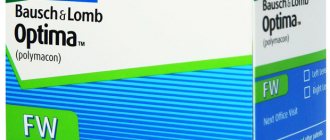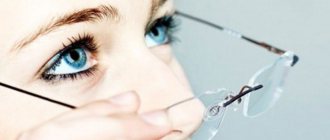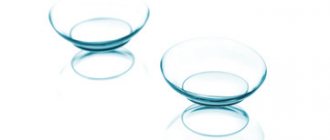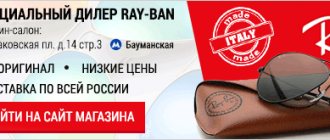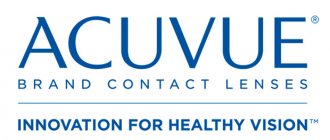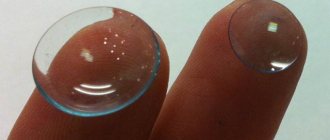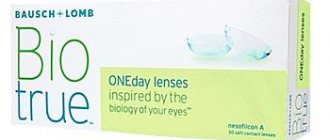Modern safety glasses cannot be imagined without specialized coatings. Large reputable manufacturers, as a rule, have multifunctional technological solutions that extend service life, strengthen them, and improve visibility.
Each company that produces glasses has its own set of technologies and materials used. Today in our review we are talking about lens coatings from the world famous brand uvex.
Historically, uvex has accumulated a great deal of technological experience in the design of special coatings for sports glasses, and this has been in maximum demand for occupational safety and health.
uvex has been developing eyewear for over 90 years, investing in technology development, possessing a large number of patents and know-how, having its own modern production, and actively introducing new solutions in personal protective equipment.
Lens coatings
Today, modern technologies make it possible to create coatings for spectacle lenses that significantly improve their optical properties, make them easier to care for, and generally make the use of glasses more pleasant and efficient. Such properties can be imparted to lenses by different types of coatings:
- They make the image clearer and increase contrast;
- Completely eliminate glare;
- Make the surface resistant to scratches and other damage;
- Protects against various contaminants.
Let's take a closer look at what the coating of glasses lenses can be and what types exist today.
How many are there, how to figure them out?
Why are coatings important? Modern glasses are made not of glass, but of plastic, which can withstand impact and even if it breaks, it does so without forming dangerous sharp fragments. But the big disadvantage of plastic is its low resistance to abrasive wear. Hence the simple conclusion - glasses need coatings to protect them from abrasions. This is the difference between high-quality glasses and low-quality ones - coatings allow the lenses to remain transparent for a long, long, long time!
Cheap, simple, primitive - they lose ground after several uses. An employee stops using PPE - there is a risk of vision damage; in addition, the employer is forced to purchase new glasses, increasing safety costs. In addition, there is a problem with any glasses - the glasses, due to their physical properties, fog up, for example, when entering a warm room from the cold. But effective solutions have been found for this scourge.
Most uvex glasses have different special coating options on the inside and outside of the lens, since universal coatings for all occasions are always a compromise and less durable. The manufacturing and coating technology is complex and completely unique, the surface of the lens and the coating become, in fact, one whole (at the molecular level), which provides unsurpassed durability. Modern coatings are the result of serious scientific work, a fusion of ideas from mechanical engineering, optics, physics, chemistry, ingenuity, resourcefulness and perseverance!
It is worth going into detail about each type of coating, if only because these coatings are invisible by definition. A coating is a thin layer with specified properties applied to the lens in a special way. All properties are contained in this transparent layer.
uvex's proprietary lens protective coatings fall into two families: a large group called uvex Supravision uvex Infradur for welding .
Dirt and water repellent
As the name implies, these types of glasses coatings protect the lens surface from the adhesion of dirt, grease, and also from traces of water. This effect can be achieved by reducing the wettability of the surface. The surface of a regular lens, even with all its apparent smoothness, has bumps and depressions to which water and other contaminants cling. A special coating fills these irregularities, thereby reducing the ability of the lens to accumulate any substances. Moreover, due to the increased smoothness, the glasses are easier to clean.
Anti-reflective coating Neva Max
Various life situations force any person who has glasses to constantly care about their appearance. When glasses fall on a table or floor or are placed without a case in a pocket, the frames break or become deformed. It's no secret that soon the lenses will lose their presentation and will be scratched if they are wiped with a handkerchief, scarf or even the hem of a jacket. Of course, modern spectacle lenses must have a protective varnish layer, but it does not always work effectively. How to avoid a decrease in the light transmission of the lens due to the appearance of scratches on its surface, a deterioration in its transparency and a decrease in image contrast, because all this “reduces visual comfort”? There is an exit! This is the new Neva® Max anti-reflective coating from BBGR with super resistance to micro-scratches.
Resistance to damage is the main requirement for lens quality. In 2005, a survey was conducted among French consumers of glasses with lenses with antireflective coatings, which criteria for lens quality they considered the most important. According to customers purchasing a new pair of glasses, scratch resistance is the third most important criterion for lens quality, after clarity and price.
In 2010, a new antireflective coating from BBGR, Neva® Max, appeared on the Russian market. This coating was a revolutionary breakthrough in the Neva® family of premium antireflective coatings. Neva® Max is the highest quality coating with MAX chemical protection against micro-scratches! It is 80% more micro-scratch resistant than Neva®+ coating and 2.5 times more scratch resistant than standard anti-reflective coating.
How did BBGR improve the durability of coated polymer lenses? Neva® Max technology is based on the Company's achievements in the field of nanotechnology, in which BBGR is an expert. The surface of the lens is coated with Neva® Max, layer by layer, each consisting of carefully selected chemical elements, the thickness of each layer being especially strictly controlled to achieve optimal results. This exclusive manufacturing process ensures the coating's durability and consistency over the life of the lens.
The innovation of this technology also lies in the introduction of an additional MAX layer. It is a micro-aerated layer with mineral composite particles and is applied between the strengthening coating layers and the antireflective coating layers. The result of using this technology is a symbiosis of the advantages of mineral lenses (highest scratch resistance) and plastic lenses (high impact strength).
To demonstrate the unique strength and scratch resistance characteristics, lenses coated with Neva® Max were subjected to a series of tests in an independent laboratory. Tests that simulate the daily stress to which spectacle lenses are subjected are the most objective. They most clearly demonstrate and recreate exactly those situations of lens use that eyeglass users encounter every day. Testing and reporting were carried out by Colts, an independent American laboratory registered with the Food and Drug Administration and specializing in optical lens testing. Test results were recorded and certified by the independent Colts laboratory and published by BBGR. The results of testing the Neva® Max coating were stunning: the maximum possible score for 3 tests is 5 points. Neva® Max coating scored 4.72! And even after all the aggressive tests, the Neva® Max coating retained a very high light transmittance - 98.5% (before tests of 99.5%) - this level is higher than that of a standard antireflective coating. The new premium multi-coating Neva® Max has taken its rightful place in the BBGR company’s range of multi-coatings.
Neva® Max coating, which is one of the leaders in all respects on the global market of antireflective coatings, and the quality of this product will not let you down under any circumstances.
Neva® Max coating is applied to all polymer spectacle lenses from the BBGR range.
Strengthening (abrasion-resistant)
The hardening coating allows you to more effectively “resist” scratches and other damage than uncoated lenses. This is especially true for polymer lenses, since they have a lower density than mineral ones and are more susceptible to mechanical stress. The hardening treatment reduces the coefficient of friction of the lens, so particles that could damage the surface do not “cling” to it.
uvex Supravision special coatings
4. uvex supravision extreme Because the coating never reaches its saturation point, the lenses do not fog up on the inside and are scratch-resistant on the outside . Instead of water droplets, a film forms on the surface. The coating is ideal for workplaces with prolonged exposure to humidity and a lot of dirt.
Help: saturation point , or dew point, is a state when relative humidity reaches 100% and the air can no longer hold moisture.
5. uvex supravision variomatic Variable tint lenses that automatically become darker when exposed to UV (within 10 seconds) and lighter when the amount of UV decreases (after 30 seconds). Now - an improved coating using uvex supravision excellence technology (anti-fog inside the lens and scratch protection on the outside). Suitable for use with frequent changes of work outdoors and indoors.
6. uvex supravision clean Suitable for autoclave use , especially for sterile environments such as laboratories or cleanrooms. Protection against fogging inside the lens and against scratching outside, resistance to chemicals. Anti-fog protection withstands at least 10 autoclave cycles. The coating provides complete anti-fog protection and maximum visibility.
Antistatic
Neutralizes static electricity on the surface of the lens, which attracts dust. This coating simplifies lens care and also provides crisp, clear images.
Multifunctional spectacle lens coatings have several or all of these properties. That is, it can protect lenses from scratches, dirt, reflected light and dust at the same time.
Multifunctional spectacle lens coatings have several or all of these properties. That is, it can protect lenses from scratches, dirt, reflected light and dust at the same time.
I. uvex Supravision coatings (basic)
The Supravision coating group is represented by three main coatings.
1. uvex supravision sapphire The lens is highly resistant to scratches and chemicals . Thanks to the use of nanotechnology, less dirt sticks to the surface of the lens - it is easy to remove water and oil contaminants (oleophobic coating).
2. uvex supravision excellence The lens is fog-resistant on the inside, and protects against scratches and chemicals on the outside . The anti-fog properties are permanent, even after repeated cleaning. Thanks to nanotechnology, the lenses are also easy to clean and less susceptible to contamination. The lens ensures longer use.
3. uvex supravision plus The lenses have enhanced anti-fog (at least 30 seconds) on both sides, as well as anti-static and scratch resistance . The anti-fog properties are permanent, even after repeated cleaning. Glasses with this coating can be used in areas with high humidity. The lens ensures longer use. Guidelines for selecting glasses have been developed for the main uvex coatings, which are presented in the form of a diagram:
- Gray area – uvex supravision saphire coating
- Orange area – uvex supravision excellence coating
- Blue area – uvex supravision plus coating
How to navigate the diagram?
Find coverage for your requirements:
- On the horizontal temperature axis, find the temperature that best reflects the climate in your workplace.
- Determine the air humidity as a percentage and find the value on the diagonal axis.
- Determine the level of contamination on the vertical axis.
- Connect the resulting three points into a triangle. The part of the triangle with the largest area indicates the most suitable coating for use in your workplace.
Why is a hydrophobic coating applied to spectacle lenses?
The hydrophobic coating is the very last layer in the structure of the multifunctional coating. It comes into contact with the environment and protects the antireflective coating from water and dirt, and also facilitates its cleaning. Thanks to the organofluorine compounds it contains, the hydrophobic coating has a very low coefficient of friction, which makes it easier to remove solid particles from its surface without causing scratches. Today, organofluorine coatings are used in many industries, having proven themselves excellent due to their high performance characteristics (such as Teflon coating).
What are the benefits of coated spectacle lenses?
The application of antireflective coatings not only increases the light transmission of spectacle lenses, which improves vision conditions, but also reduces eye fatigue, since a person has to strain less to clearly recognize objects. Coating spectacle lenses allows you to solve the problem of spurious images, reflections from the back surface and, to a large extent, the manifestation of chromatic aberration of highly refractive spectacle lenses. An undoubted advantage of coated spectacle lenses is the reduction of eye fatigue when working in rooms with several light sources, as well as when working on a computer. In addition, spectacle lenses with anti-reflective coatings allow others to clearly see the eyes of a person wearing glasses, which is an undoubted advantage from a cosmetic point of view. The user will also feel a significant advantage of coated spectacle lenses when driving a car at night: firstly, the total light flux reaching his eyes increases, which leads to an increase in image contrast, and secondly, the impact of spurious images and reflections of the headlights of oncoming cars is reduced and street lighting. Patients over the age of fifty are characterized by a decrease in light transmission of the lens, so for them, the use of clear spectacle lenses will promote more natural vision.
Coating spectacle lenses allows you to solve the problem of spurious images, reflections from the back surface and, to a large extent, the manifestation of chromatic aberration of highly refractive spectacle lenses
How to properly care for coated spectacle lenses?
Anyone who purchases spectacle lenses with anti-reflective coatings should be prepared for the fact that, as we have already said, they will have to be cleaned of dirt several times a day. And this is considered one of the disadvantages of coated spectacle lenses. Experts recommend first rinsing the glasses under running water (to remove solid dust particles), then lightly drying them with a lint-free cloth, and then cleaning them using a special spray and a cloth. It is best to wipe spectacle lenses with microfiber cloths, which are available in every optical salon today. It is not recommended to use paper napkins and towels for wiping, as they may contain wood fibers that can scratch the coating when wiped.
Prepared by Olga Shcherbakova, Veko#2(66)
Why do coated spectacle lenses from different manufacturers have different shades?
When viewed from a certain viewing angle, all coated spectacle lenses have a slight tint of residual reflection. This is a normal phenomenon due to the spectral characteristics of the coating. The hue of the observed residual reflection corresponds to that region of the visible spectrum where a slight increase in reflectance is observed. A high-quality coating from the same brand from reliable manufacturers will always have the same shade, regardless of the material of the eyeglass lens on which it is applied. From an optical point of view, the color of the observed shade is not so important, but its choice is determined by user preference. According to studies conducted by manufacturing companies, most users prefer green. In addition, some manufacturers of vacuum equipment claim that it is easiest to ensure color stability of the residual reflection in the green region of the spectrum. At the same time, today coated spectacle lenses are produced in a wide variety of shades - yellow, blue, lilac, and the choice of one of them is determined by the fashion and taste of the users.
What are the disadvantages of spectacle lenses without anti-reflective coatings?
Due to reflection losses, uncoated spectacle lenses reduce the light output reaching the user's eyes by 8–16%, depending on their refractive index. When wearing spectacle lenses without coatings, a person also faces the problem of ghost images and interfering reflections from the back surface of the spectacle lens. Ghosting causes blurred vision of objects and can cause serious problems, especially when driving at night. Annoying back reflections occur when a light source is behind a person, causing them to see the reflection not only of that source, but also of their own eye and eyelashes. When using spectacle lenses with a high refractive index and a low Abbe number, the user is faced with the phenomenon of chromatic aberration, which results in the appearance of iridescent or colored images around the object in question.

